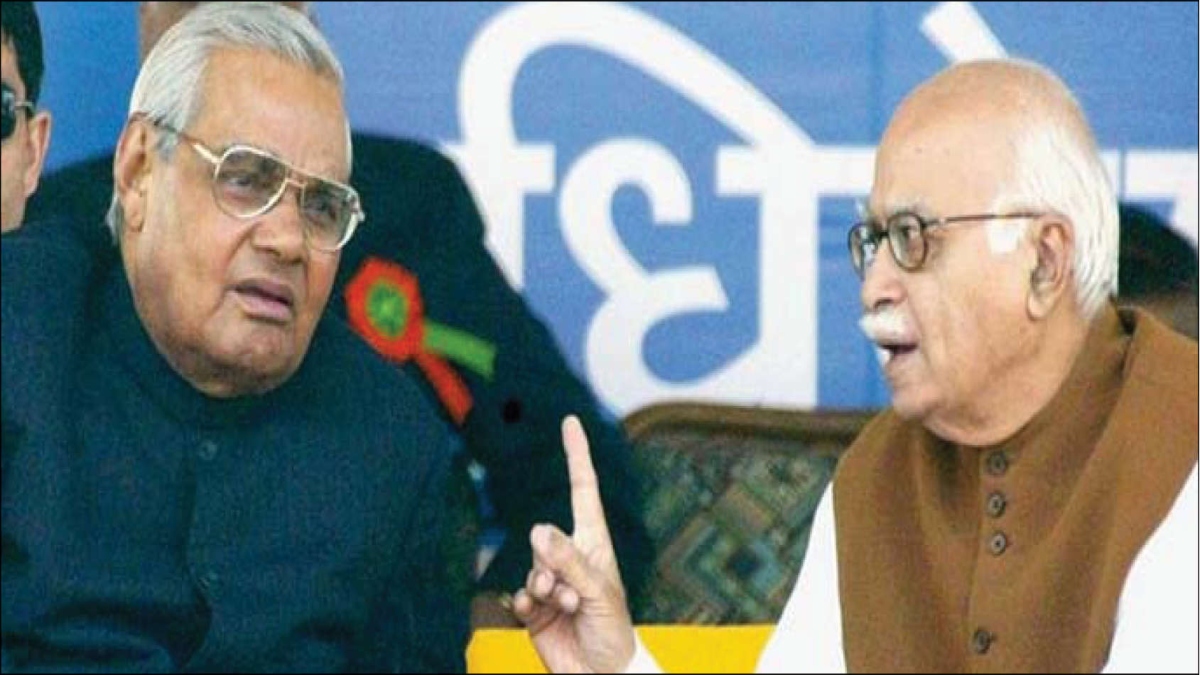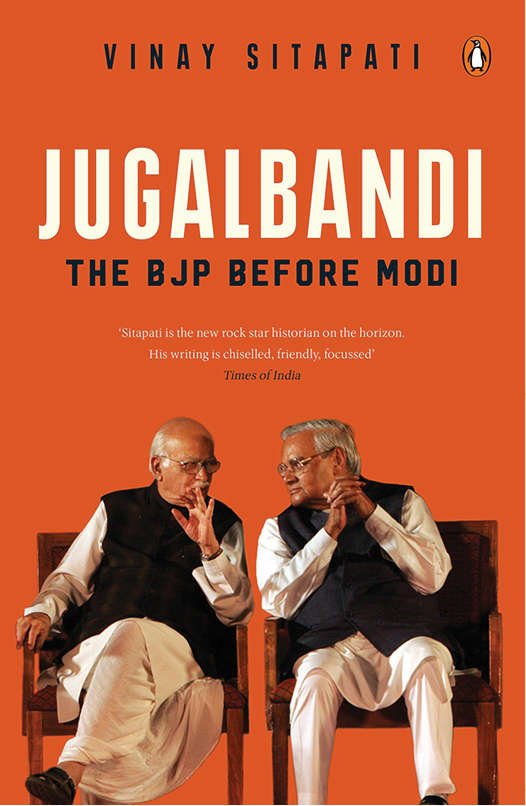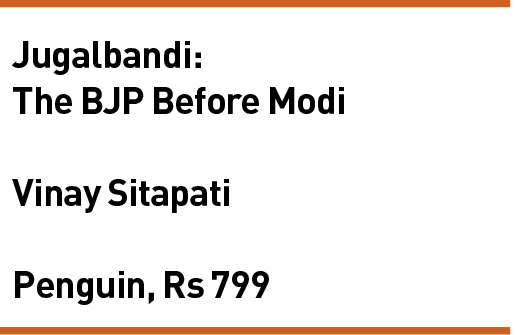


From the time of Jawaharlal Nehru and Sardar Vallabhbhai Patel, post-Independence Indian politics has mostly been about jugalbandi. Even during the turbulent 1970s, there was the mother-son jodi of Mrs Indira Gandhi and Sanjay Gandhi ruling the corridors of power, often imperiously. However, it was in the era of coalitions, since the mid-1990s—post the unleashing of the forces of liberalisation by P.V. Narasimha Rao in 1991—that the culture of jugalbandi saw itself truly blossoming in the corridors of political power. It was seen first between Atal Bihari Vajpayee and L.K. Advani, then between Manmohan Singh and Sonia Gandhi, and now between Narendra Modi and Amit Shah. The nature and the characteristics of the three jugalbandis may differ starkly from each other, but it was their personal chemistry and conduct that shaped the polity of the nation in the past 25 years.
Vinay Sitapati’s new book is about the jugalbandi between Vajpayee and Advani. It hardly needs to be mentioned that their relationship was based on mutual trust and respect, and that they kept it that way even when things were not moving well, especially when “the love from their political marriage evaporated” between 1998 and 2004. “Divorce,” after all, “was not an option” for them.
If analysed closely, the Vajpayee-Advani relationship has some similarities with the Nehru-Patel saga. At the time of Independence, it was Patel who handled the Congress with complete control. Nehru was smart enough to handle Mahatma Gandhi, who convinced, through his life and then tragic death, Sardar to become his deputy. In the Vajpayee-Advani saga too, for all the mass popularity and the passion he would generate among his listeners, all Vajpayee could get the BJP were two seats in the 1984 Lok Sabha elections. In fact, Vajpayee couldn’t win his own seat from Gwalior. The BJP that came to power in the late 1990s was the BJP of Advani. It was he who created it with his own sweat and strategy. Even today, it is being run by those very people who were brought in, protected and promoted by Advani. In all likelihood, Modi wouldn’t have survived the Vajpayee fury post the 2002 Gujarat violence when he questioned Modi, then state CM, on rajdharma. Interestingly, it was veteran journalist and iTV Network’s Senior Executive Editor Priya Sahgal’s question to Vajpayee in 2002 that led him to famously advise Modi to follow rajdharma.


The comparison, however, ends there. For Patel and Nehru weren’t close. The only thing that kept them together before and after Independence was the Mahatma. But Vajpayee and Advani were always very close. They worked together, often complementing each other, and, as Sitapati eloquently brings out in the book, were not averse to working under each other. The author explains the deep understanding and respect the two had for each other when he writes how, between 1968 and 1986, Vajpayee was the leader and Advani served under him. But thereafter for a decade, amidst the Ramjanmabhoomi movement, it was Advani who led the party and Vajpayee followed him. Again, in 1996, things turned in favour of Vajpayee when Advani announced Vajpayee to be the prime ministerial candidate, given the latter’s acceptability beyond the BJP.
Sitapati also does a good job in exploring how Vajpayee, born in “a poor Gangetic Brahmin family” who “joined the RSS because of his caste and because his Gwalior was also Marathi-speaking”, became a liberal face of the BJP, while Advani, born in a rich, cosmopolitan Karachi family and spoke English before he learnt Hindi, became the hardline face of the party. Sitapati writes, “Had it not been the cataclysm of Partition—which turned the prosperous Advanis into penniless refugees—Advani might have never joined the RSS. He was, and that is the irony, too much of a ‘Macaulayputra’.”
Maybe it was this contradiction in Advani that ultimately led to his downfall. For, when he tried adopting a moderate stand, maybe seeing Vajpayee doing it so effortlessly, all he was doing was going back to his real self. Maybe he realised the limitations of the hardline politics. But by doing so, he decimated whatever he had earned without gaining anything in return. In that way, Advani wasn’t as smooth a transformer as Vajpayee was. After all, Vajpayee, for all his liberal image, had his share of rabble-rousing. In fact, in 1983, he made such a fiery speech in Assam—at a time when the Bangladeshi issue was at its peak in the state—that even the BJP had to disown his speech. For, many thought it was that speech which created an incendiary ground for the Nellie massacre! Even some of his Ram Mandir speeches were equally strong and very un-Vajpayee-like. Maybe Advani thought he could do a Vajpayee. Sadly, he failed miserably!
Sitapati finds another trait that might have undone Advani’s cause. He quotes Balraj Madhok, Vajpayee’s rival in the Jana Sangh, as saying that Advani “lacked confidence”. It was only in 1989 that Advani came into his own as a national leader and even then yielded the prime ministership to Vajpayee, he said. One wonders what would have been the scenario had a Modi been there in place of Advani. The Vajpayee coronation wouldn’t have been as seamless, for sure, though it would be foolhardy to compare the 1990s with contemporary times.
The book also throws light on how Vajpayee wasn’t always so gentle with his competitors. It reminds how he met RSS chief Balasaheb Deoras and said, “It’s either (Subramanian) Swamy or me in the new party.” Balraj Madhok and M.L. Sondhi too faced his ire. But his strongest adversary within the party was Nanaji Deshmukh. “The co-founder of the Jana Sangh was older than Vajpayee, and perhaps the only man remaining in the party who could call him ‘Atal’ without the honorific ‘ji’ at the end. But Nanaji was by now disillusioned with the way the Janata Party had put ambition before principle. Equally, he resented how methodically Vajpayee had demoted him. Nanaji could have made a public scene, as was standard in other parties. Instead, he announced his retirement from politics, claiming that he had turned sixty and wanted to set an example,” Sitapati writes.
The author does well to dive deep into the lives of the two giants who shaped India’s politics in the post-liberalisation era, directly and indirectly. Where he could have done more is to have not fallen into the liberal versus hardline divide. It was mostly the handiwork of the media and intelligentsia who created a secular, liberal Vajpayee and a Hindu hardline Advani. They were often on the same line. They switched roles, as per their personal as well as party needs. Vajpayee, to his credit, could seamlessly make a transformation, when needed. Advani, to his misfortune, despite being the main general who conquered the high walls of the Raisina Hill, couldn’t and thus ended up being on the wrong side of history.
Like his previous book on Narasimha Rao, this one too is a must-read for its originality, eloquence and seamless combination of intellectual depth and journalistic brevity. One just hopes Sitapati takes the jugalbandi story forward and comes up with two more books—on Sonia Gandhi and Manmohan Singh as well as Narendra Modi and Amit Shah. Very few would be as well-placed to deal with these two stories as he is.